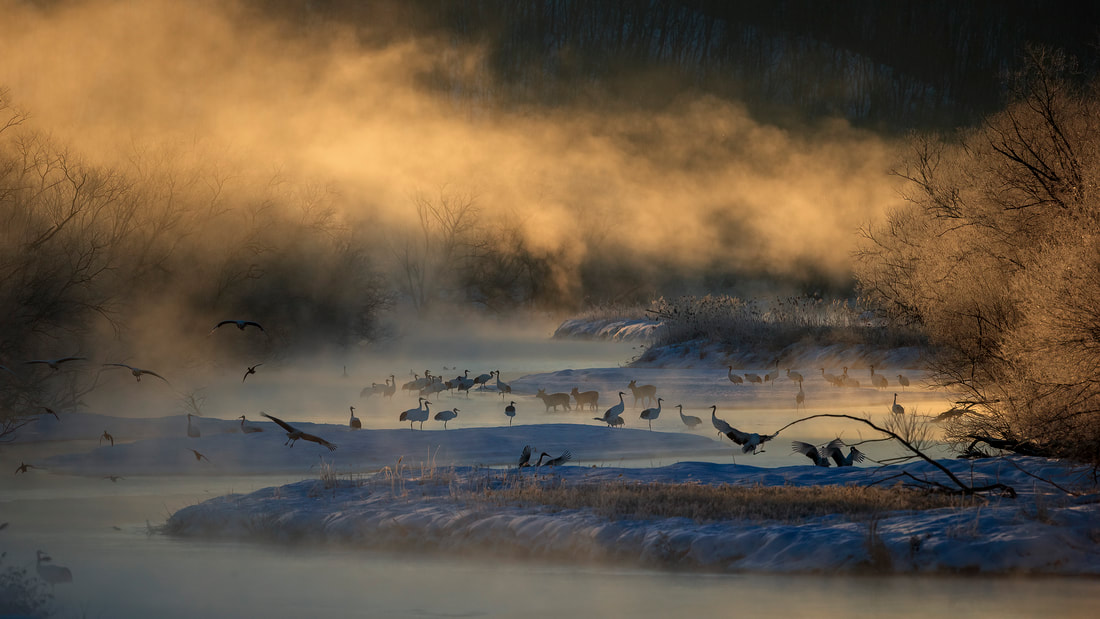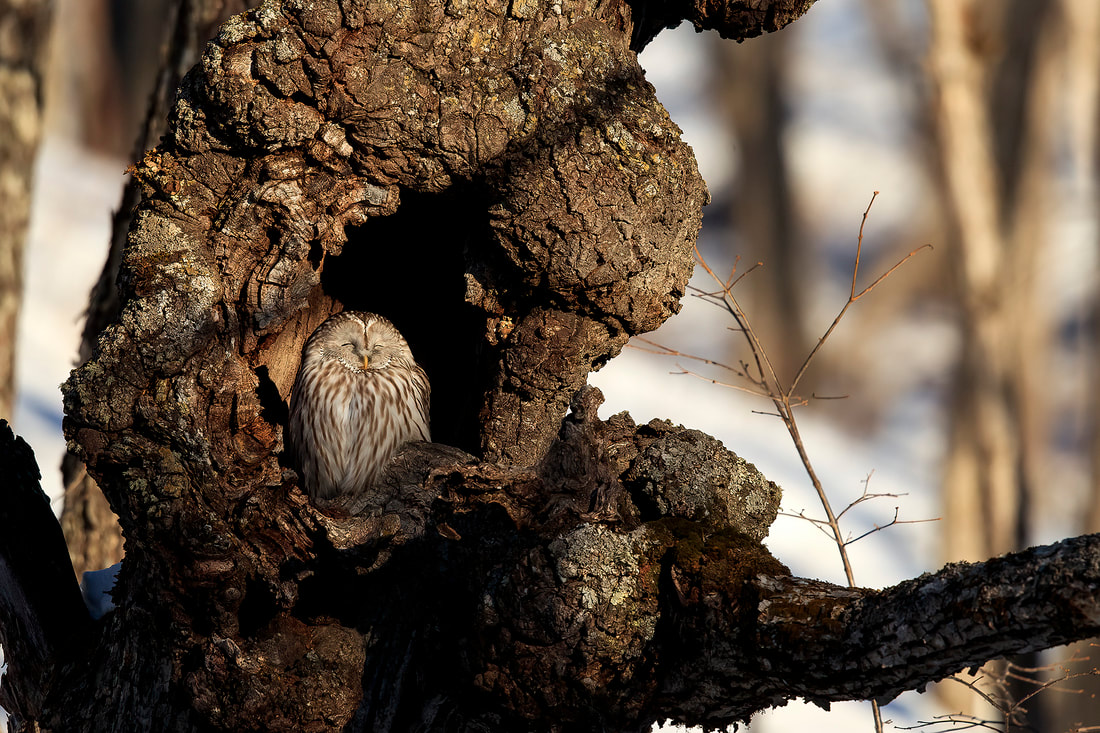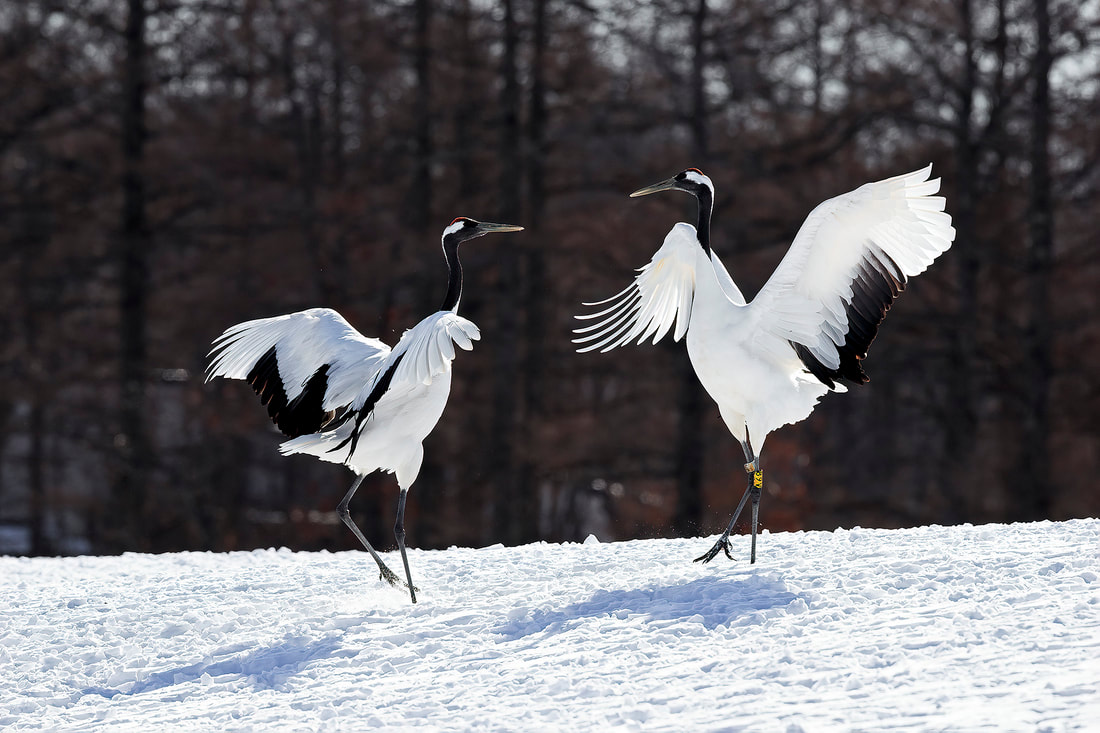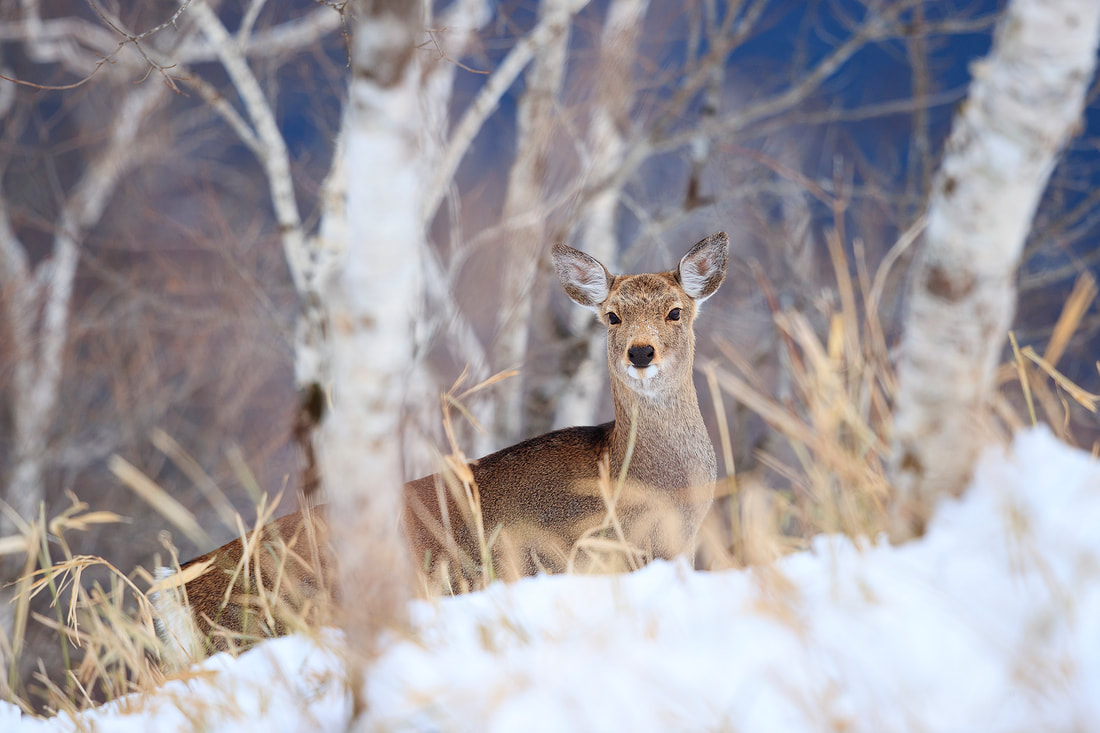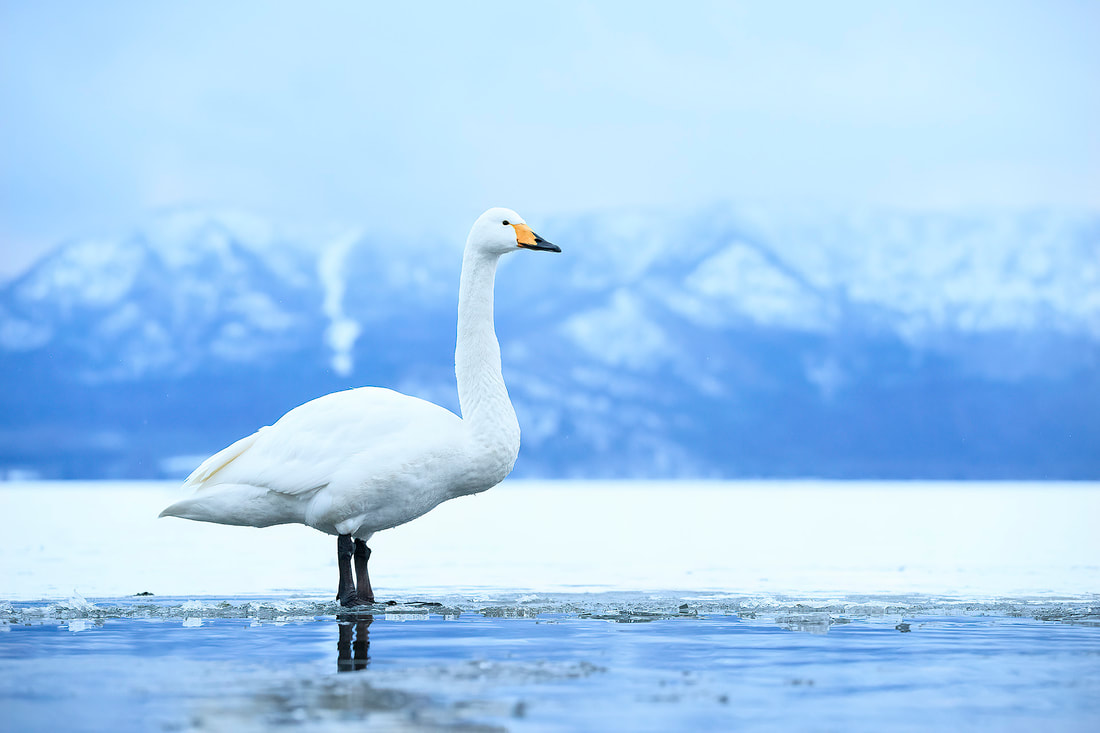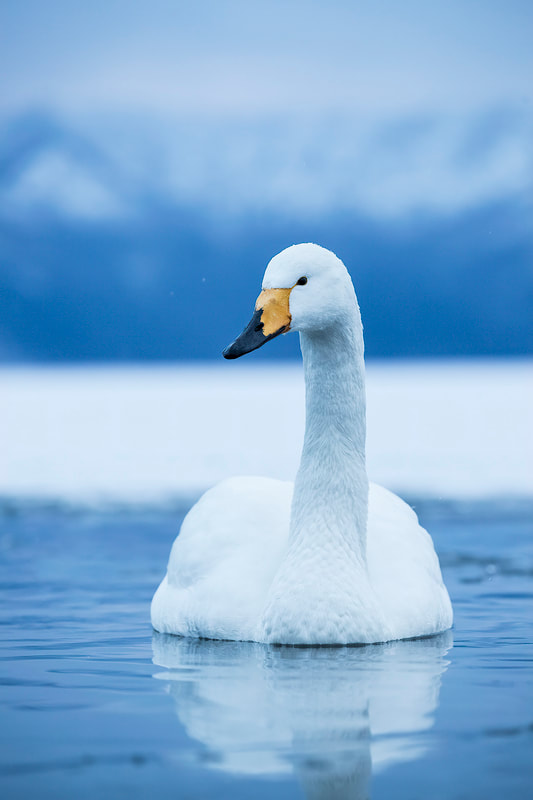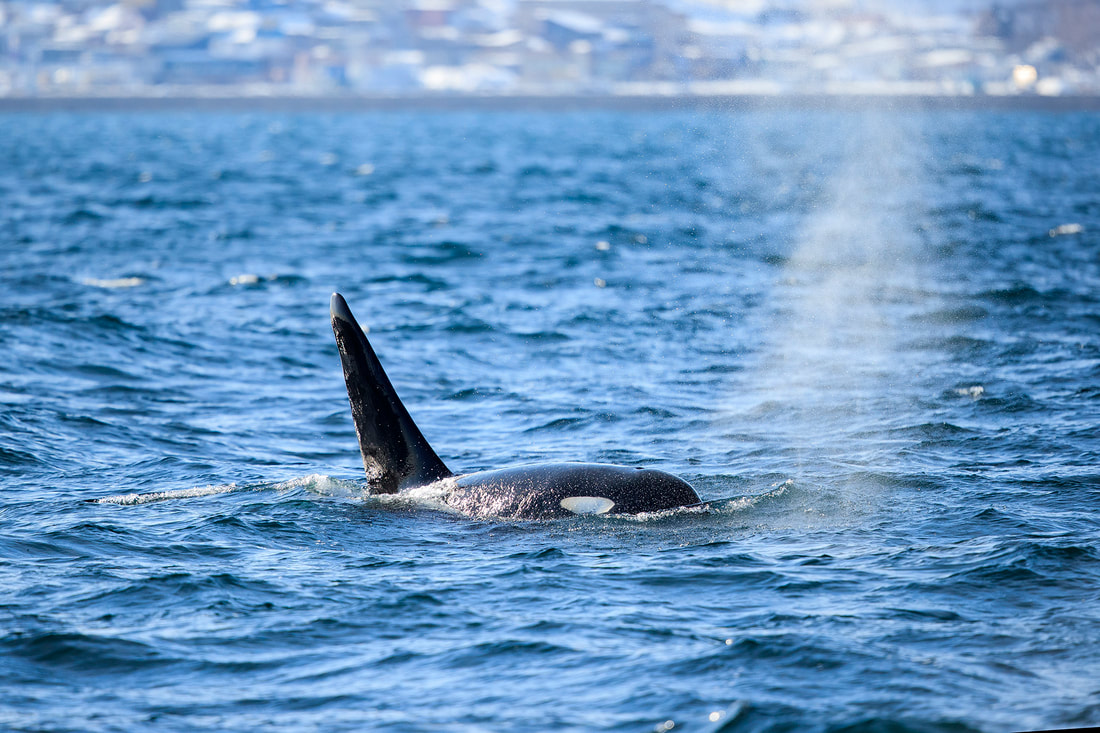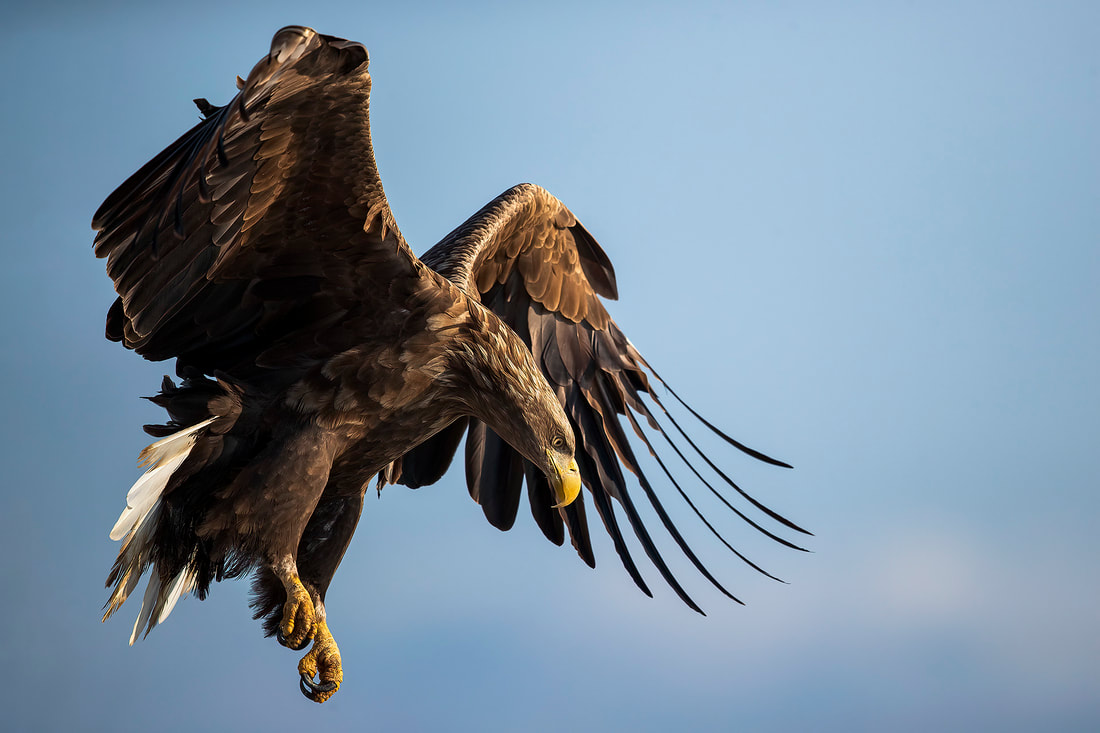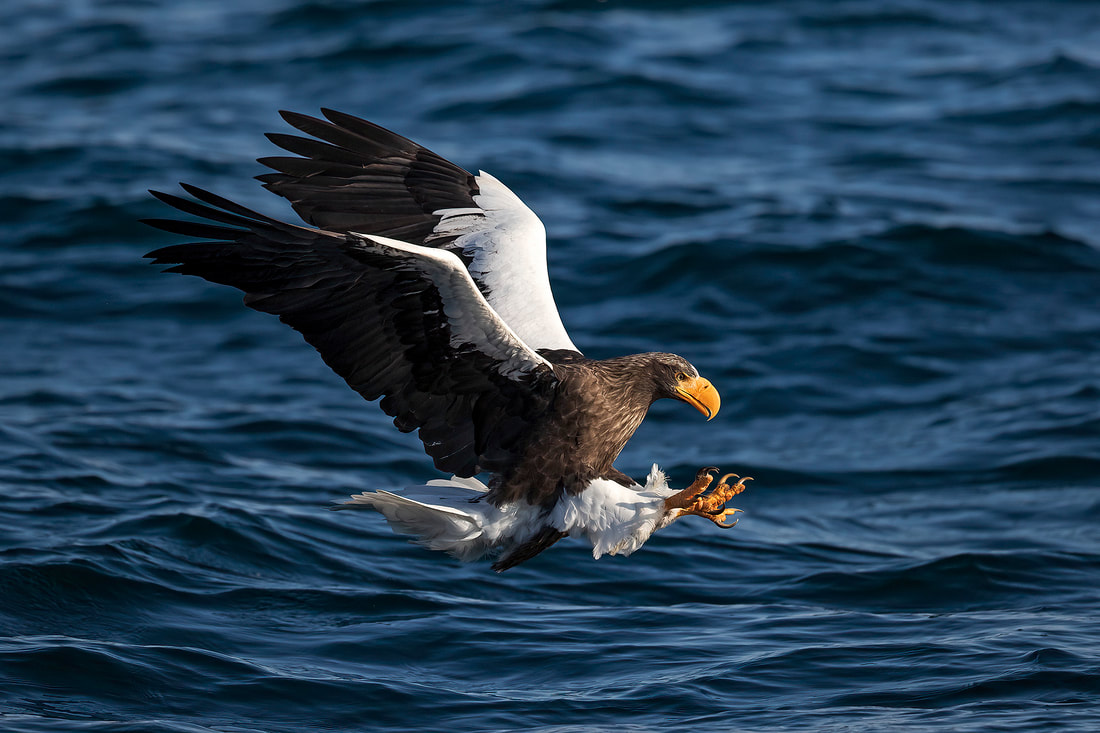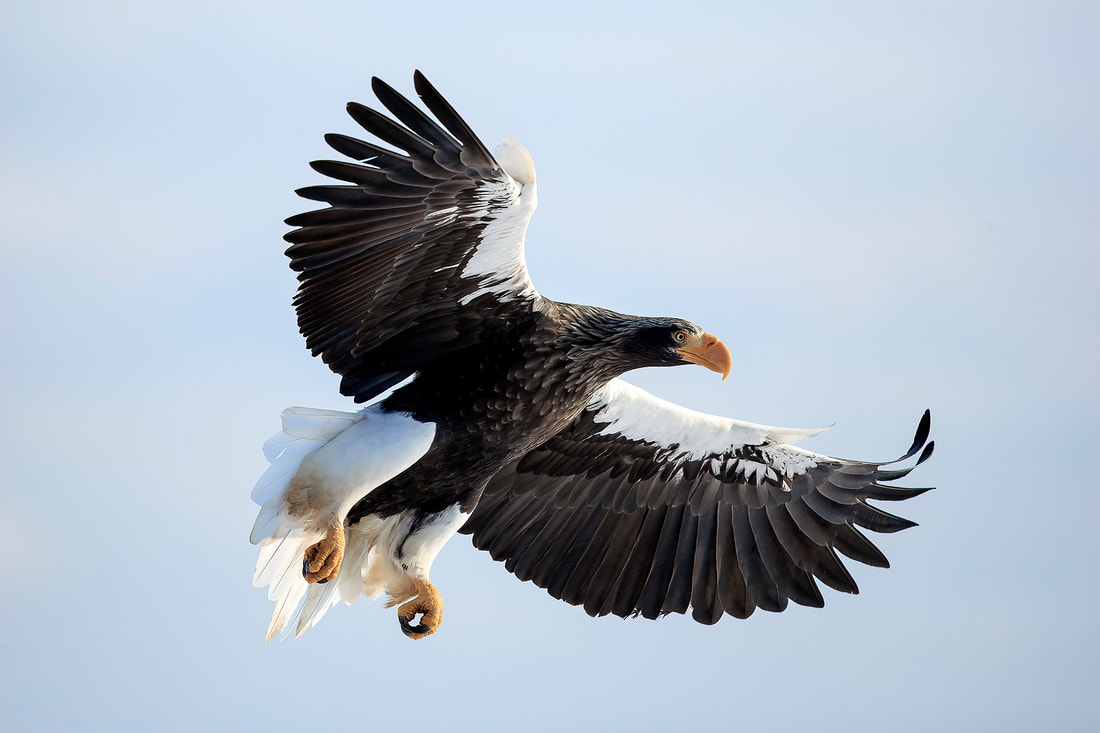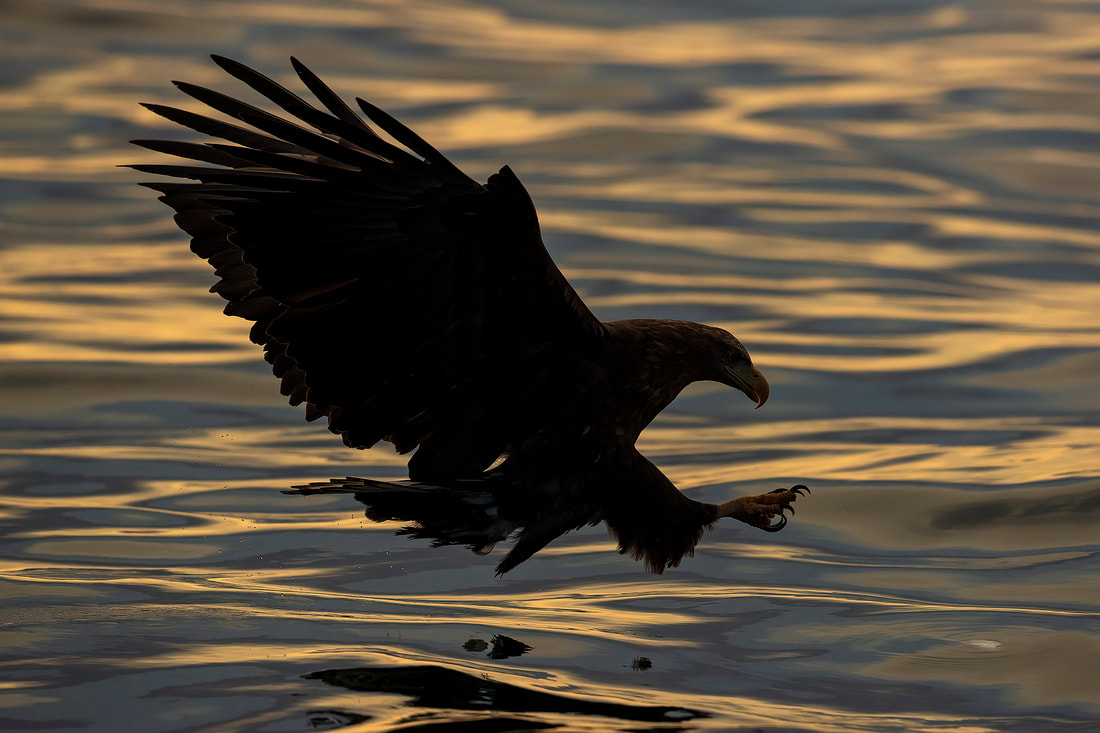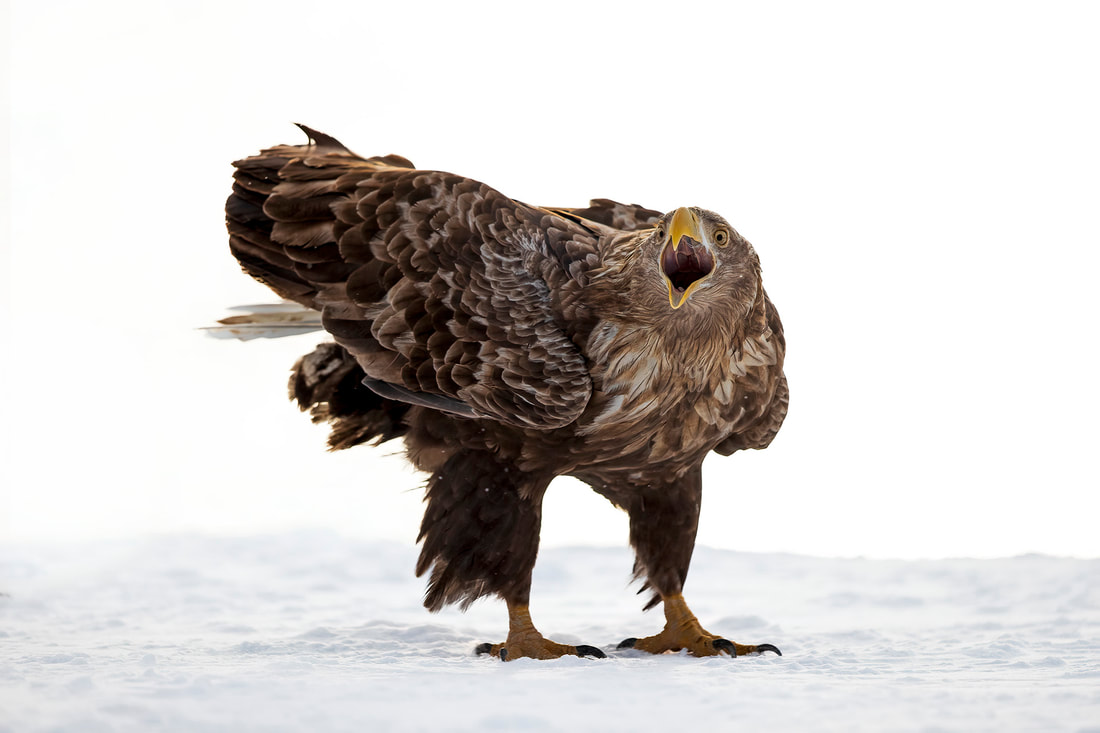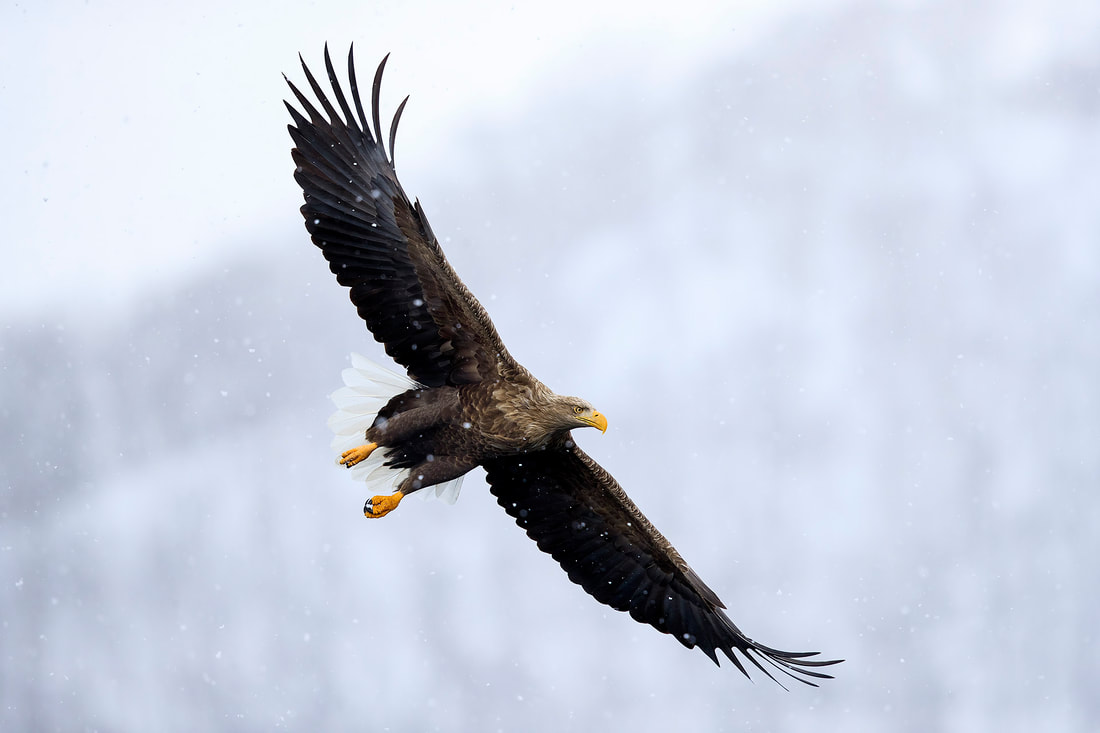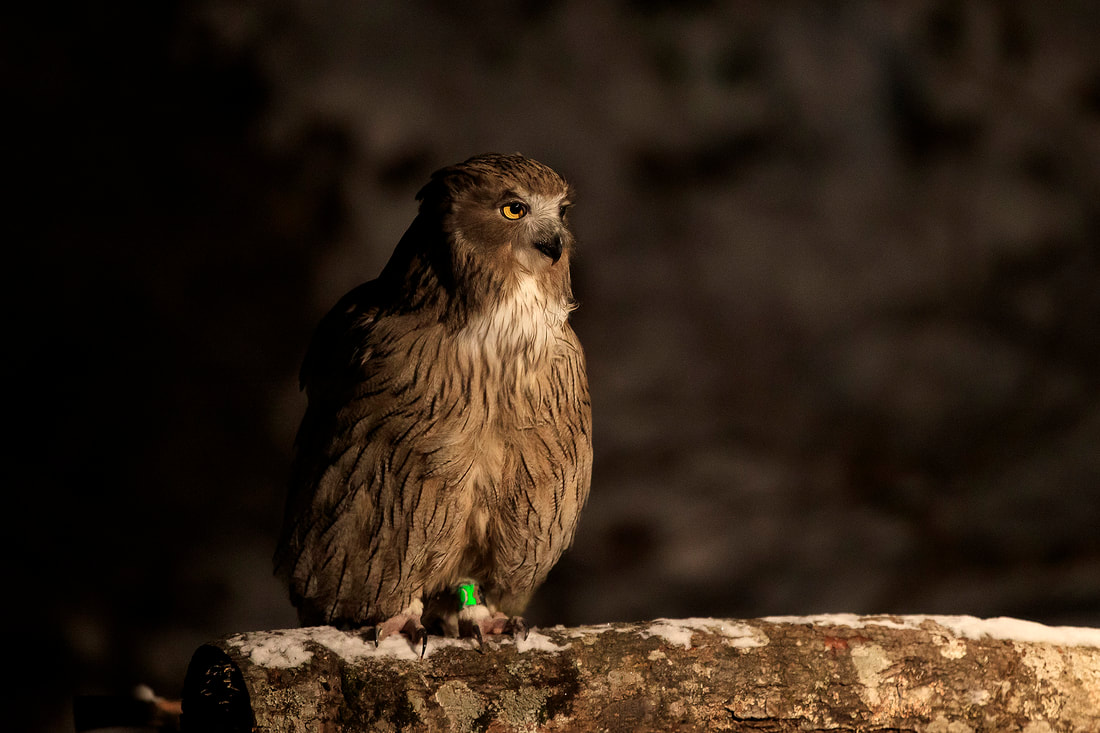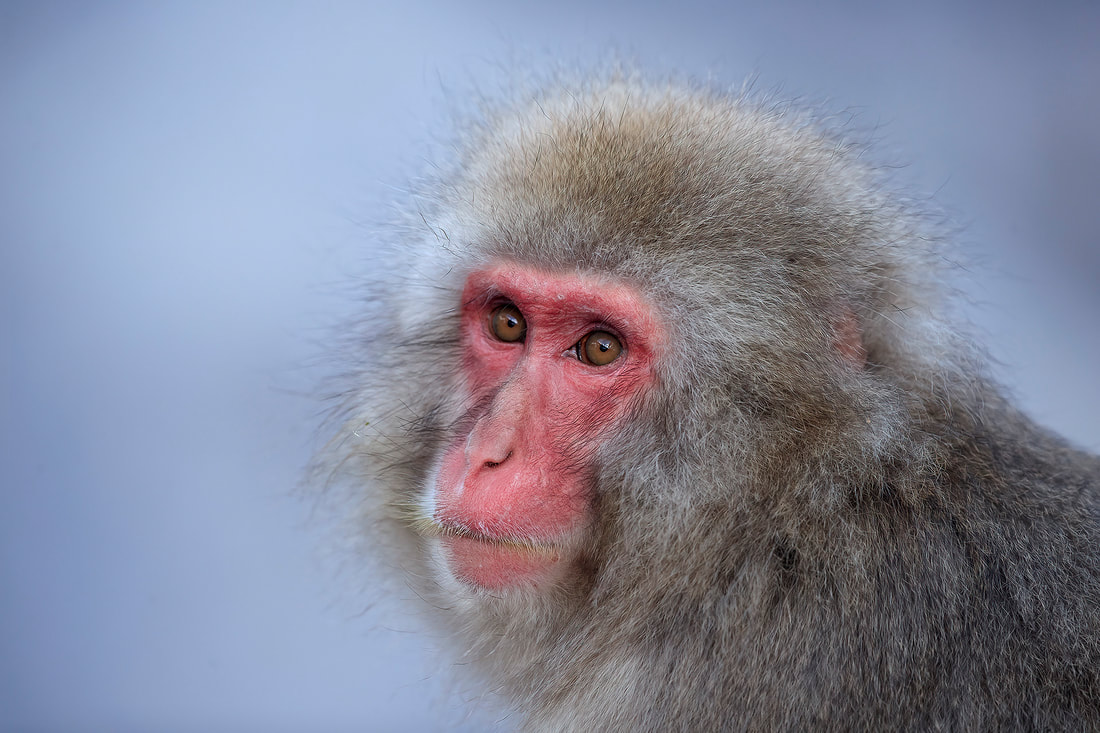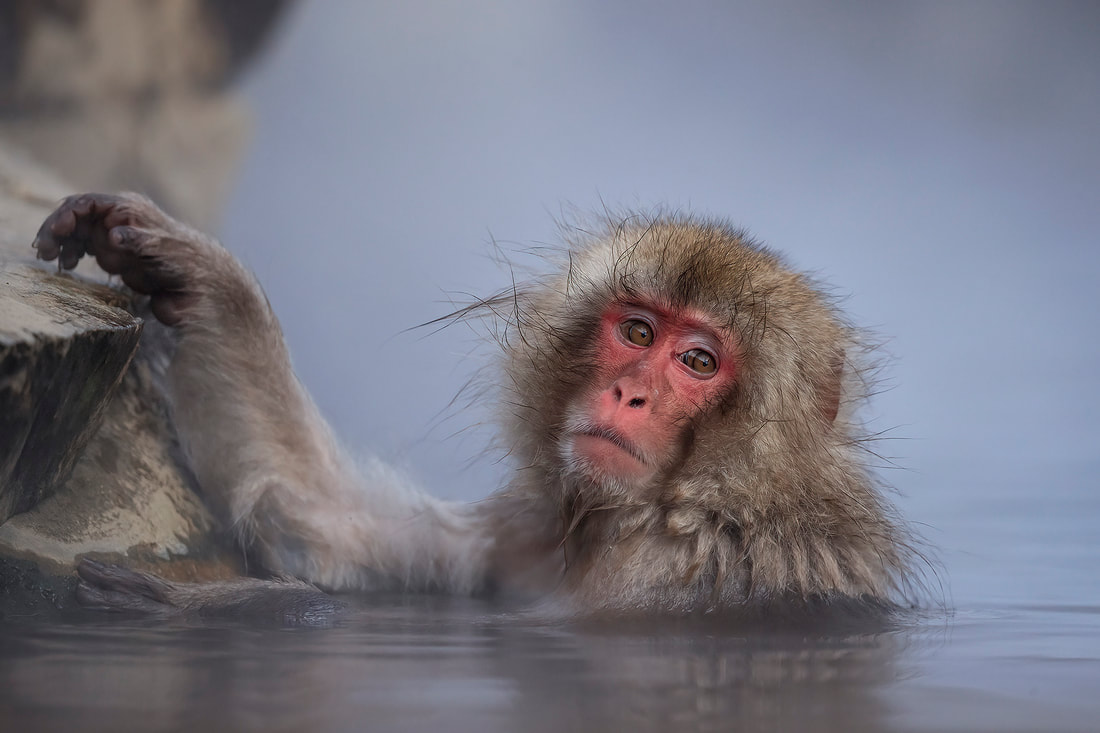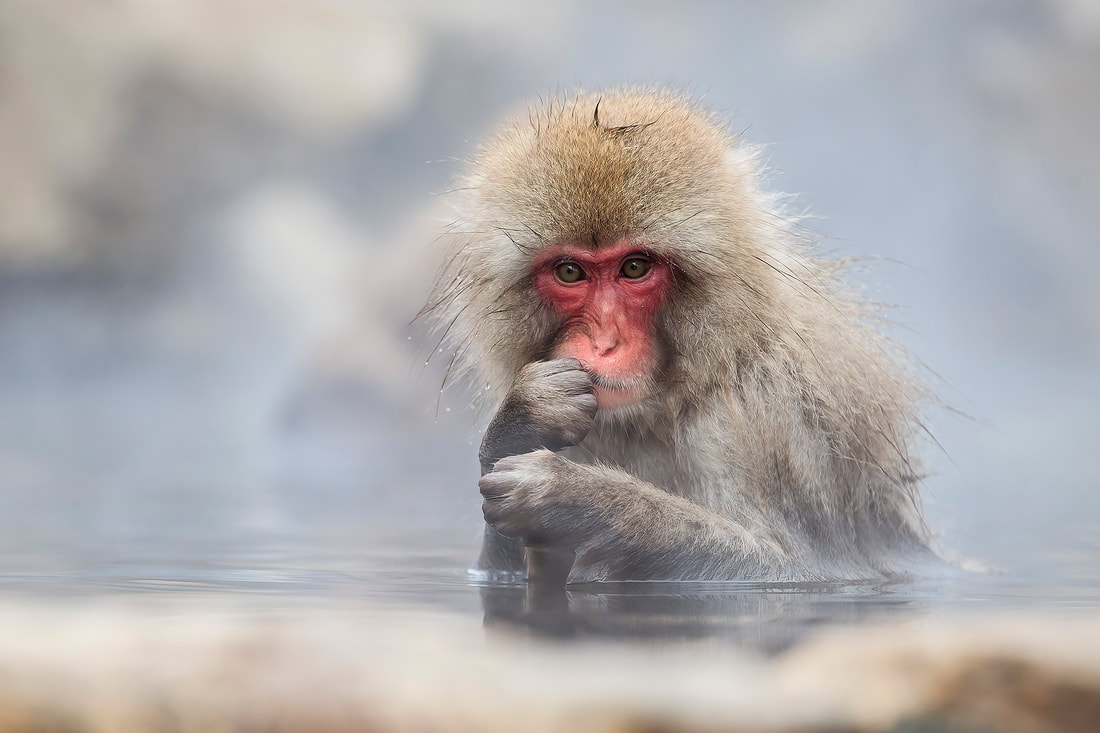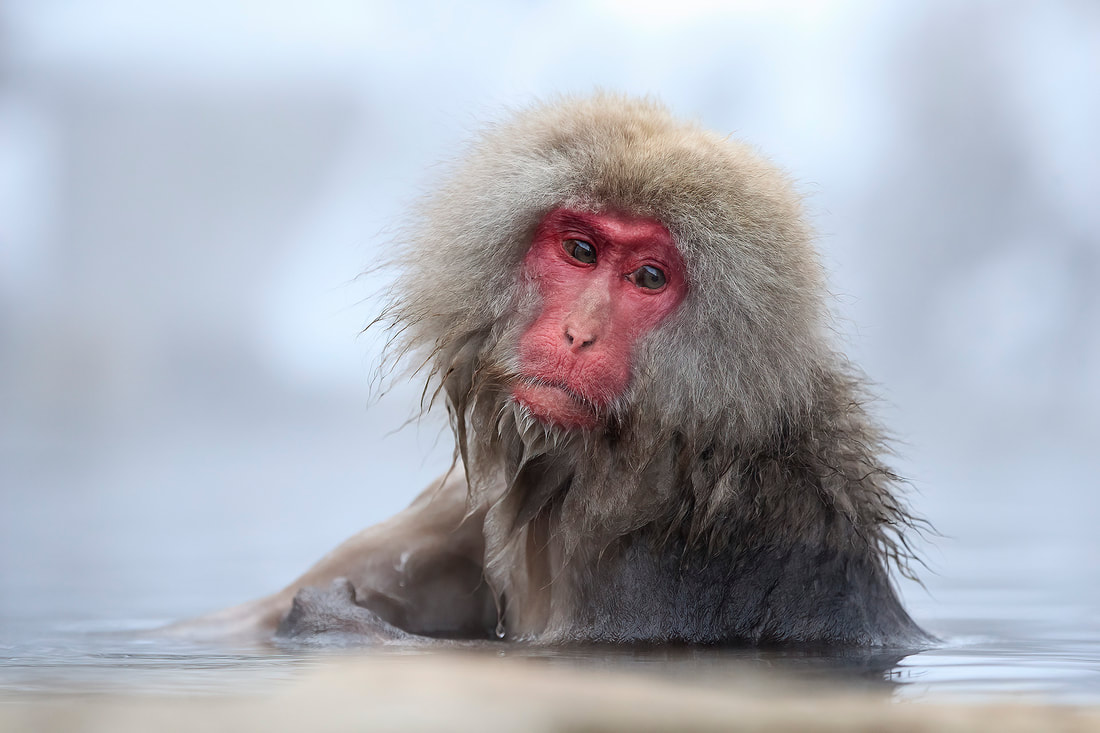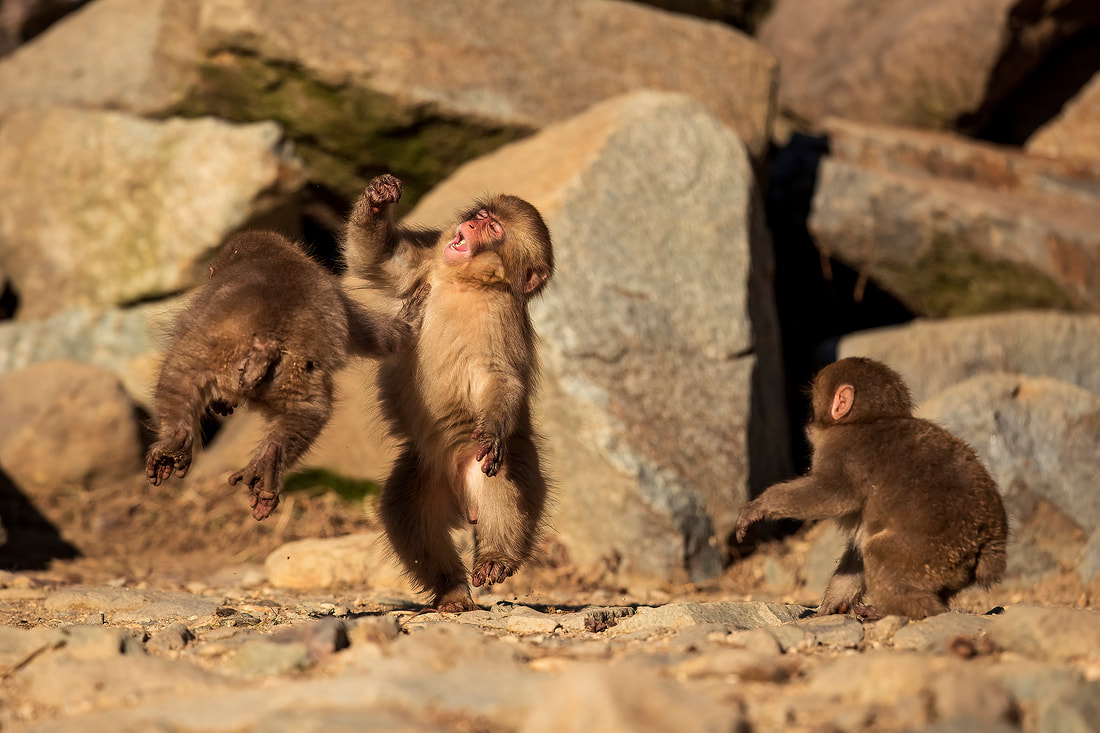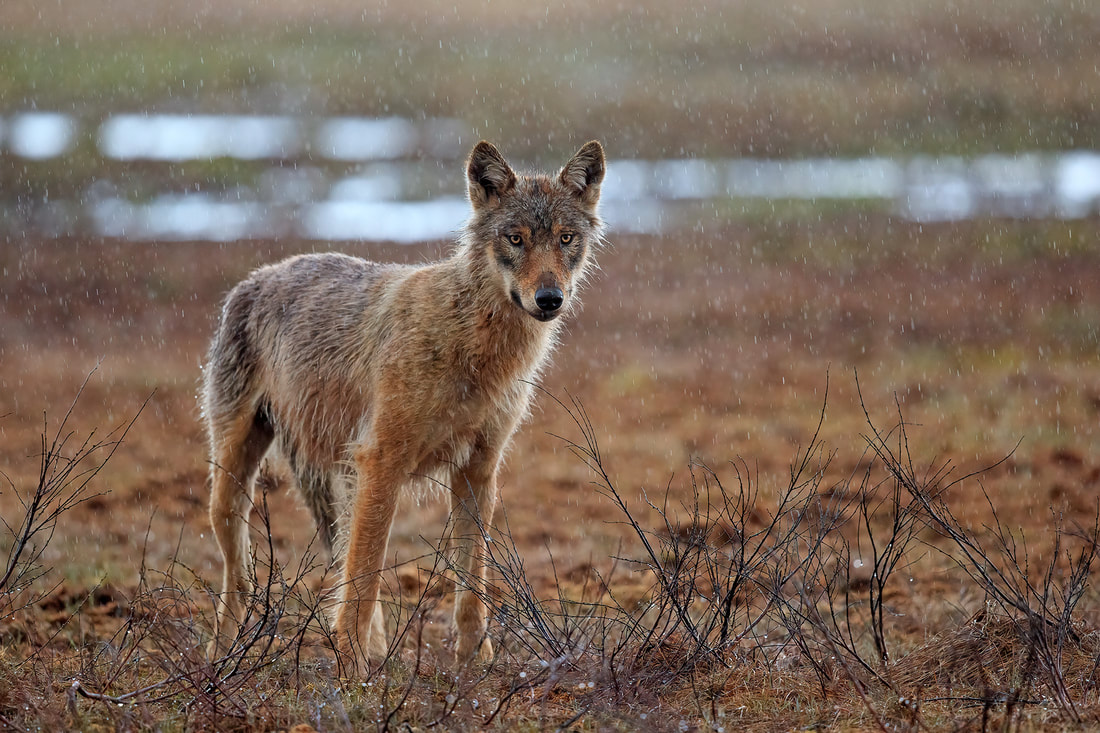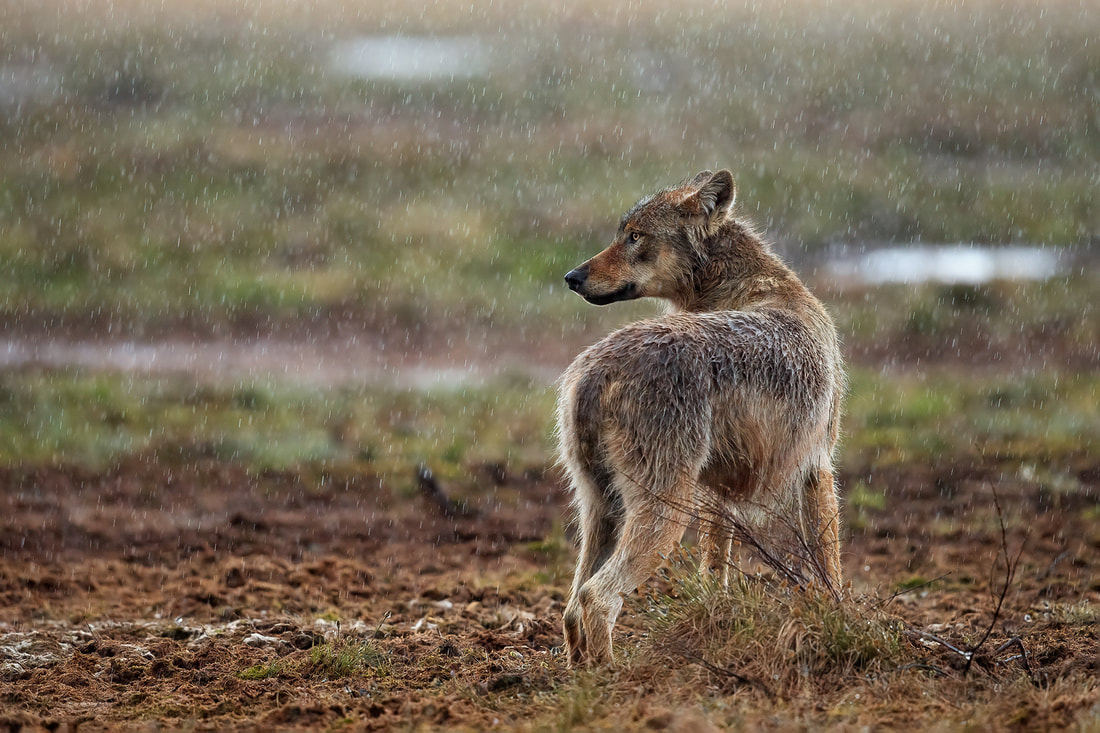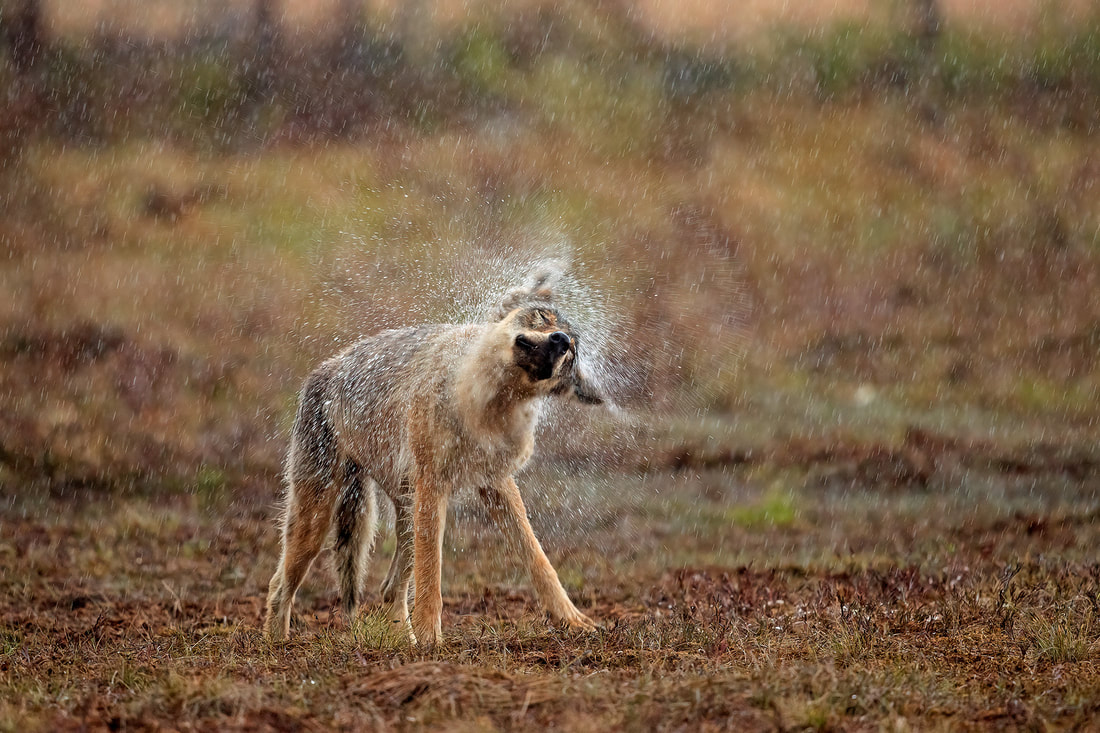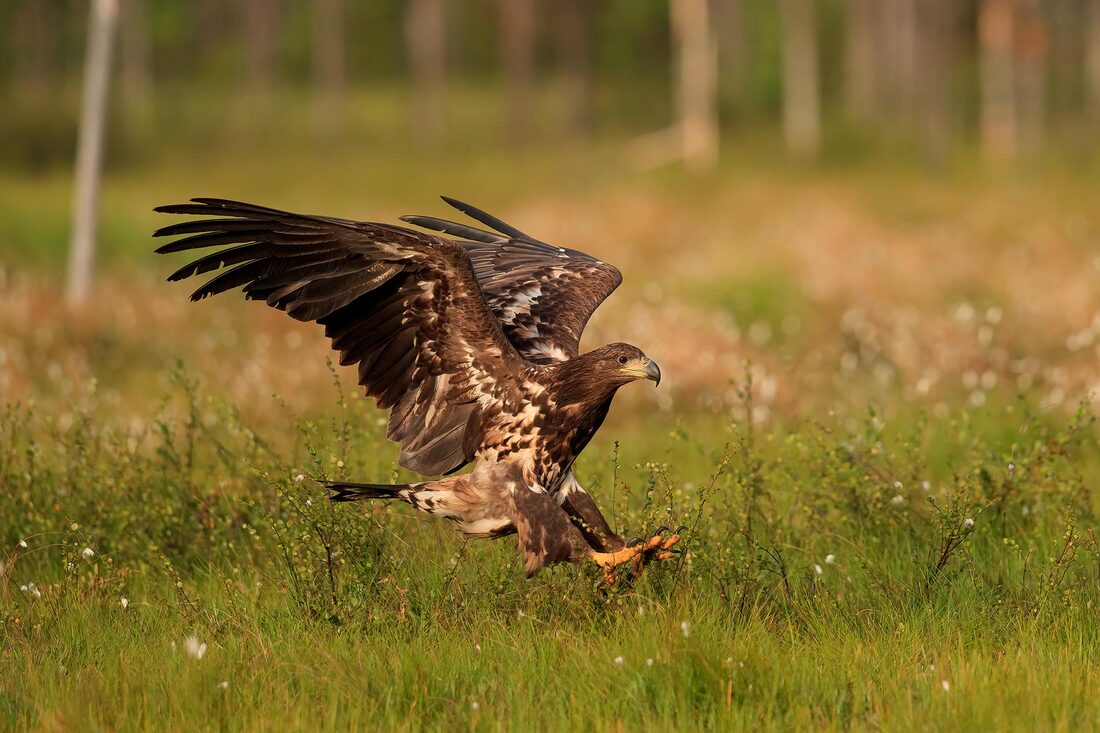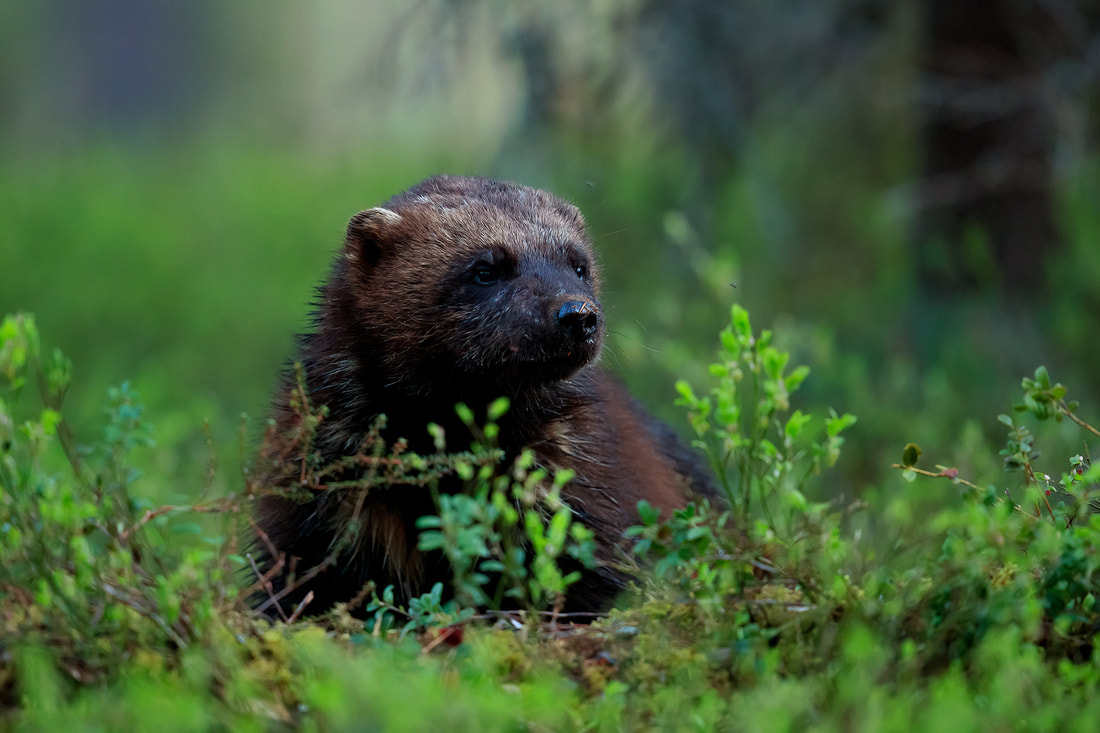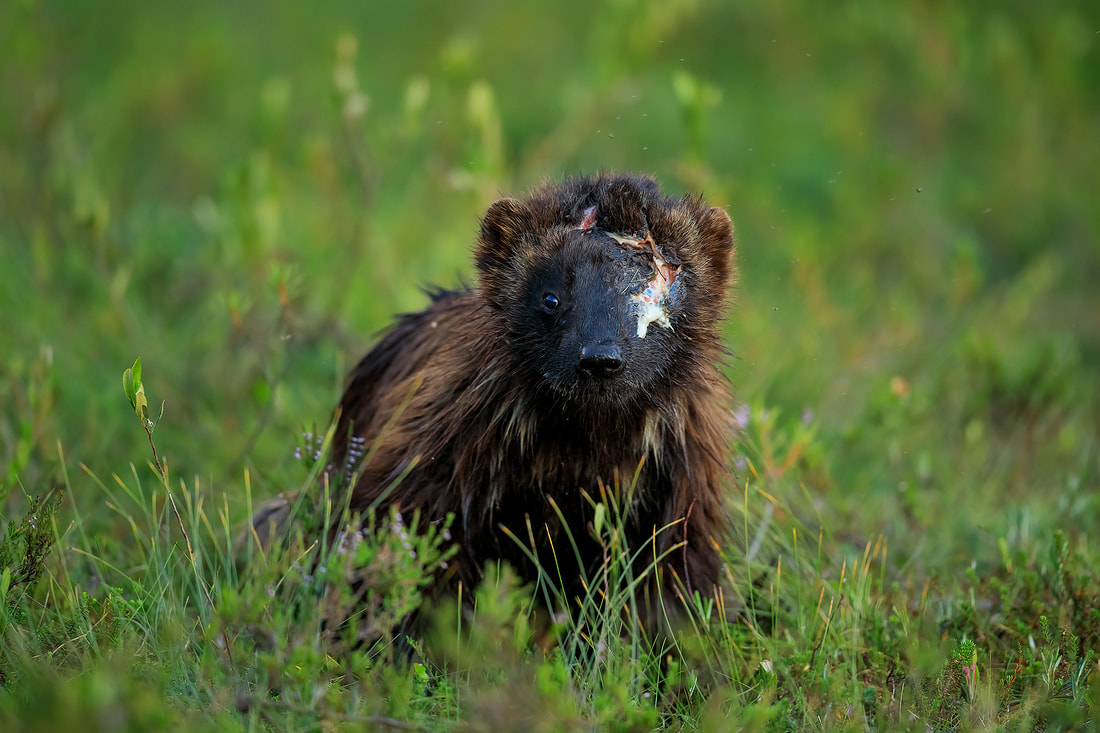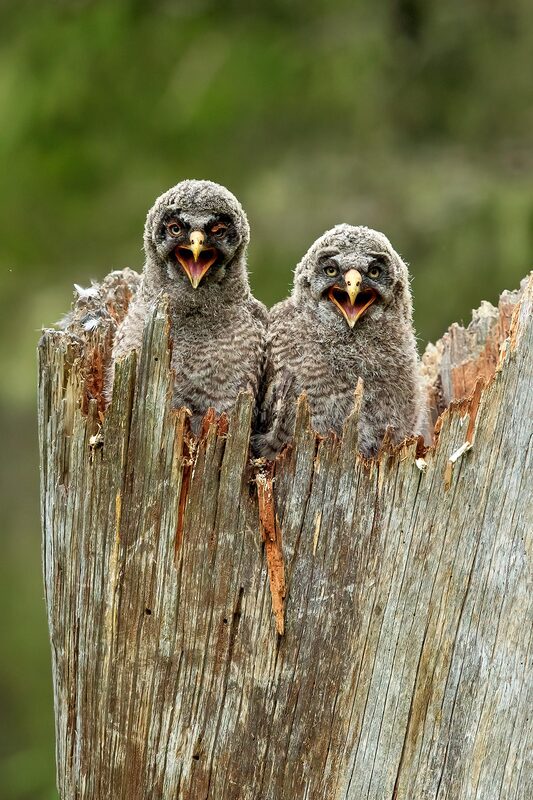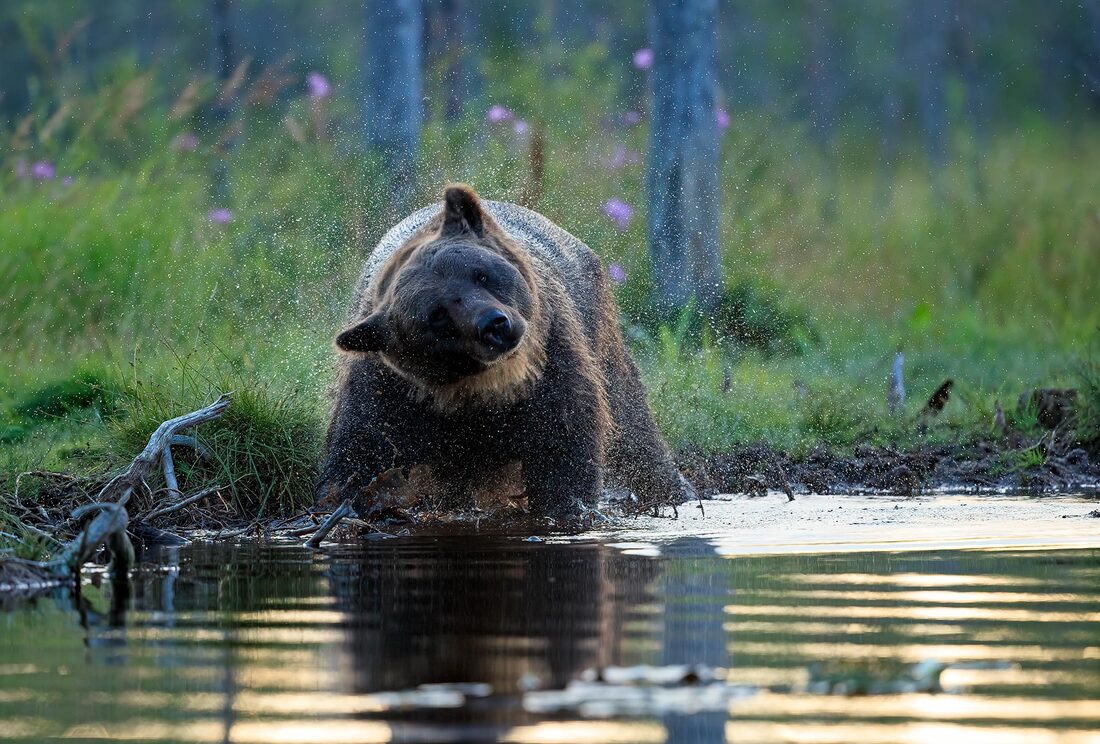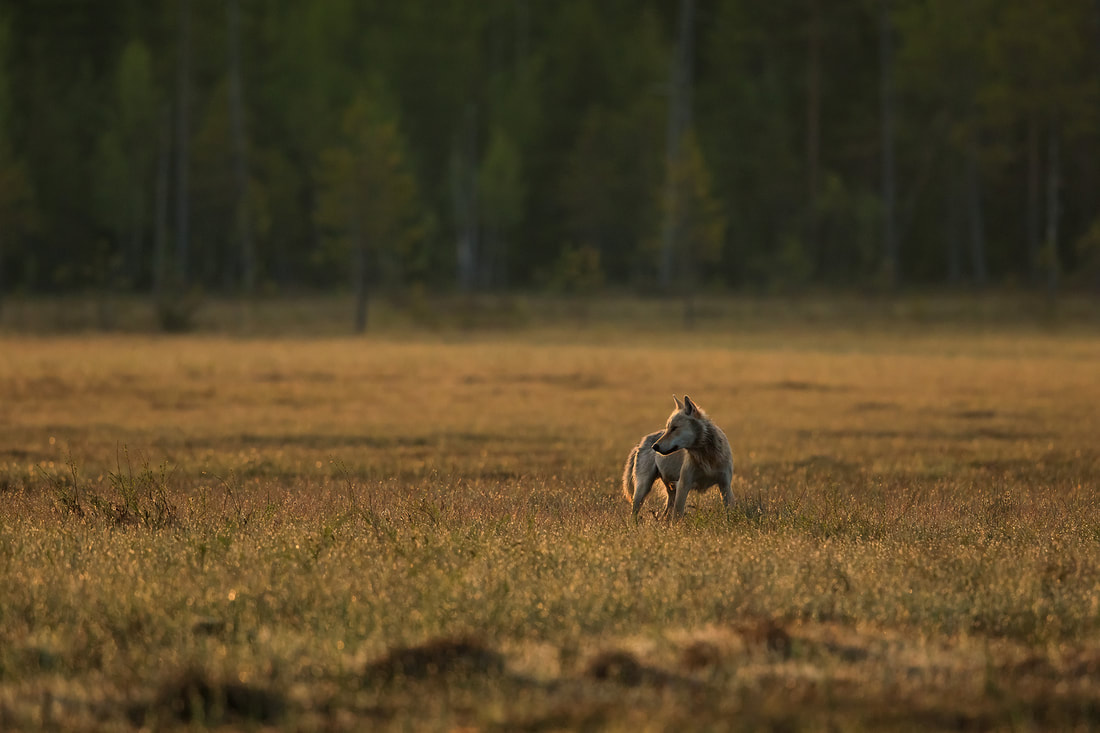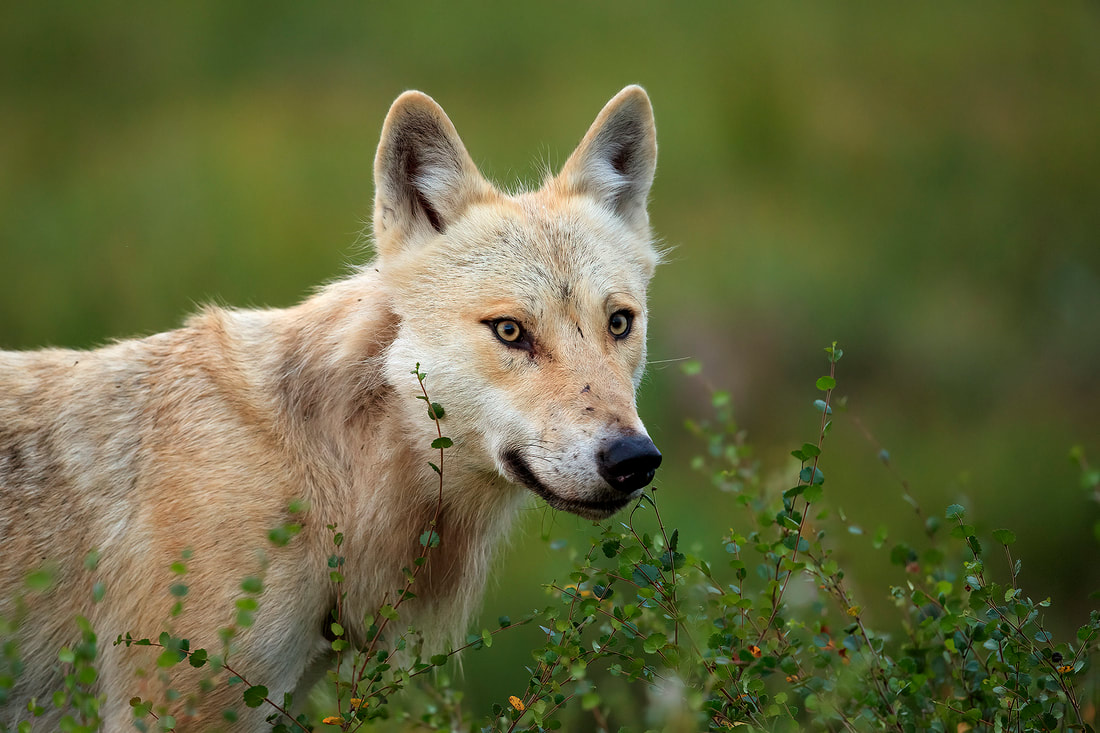|
It was a real pleasure to head back to Japan once again and lead another trip for Wildlife Worldwide alongside good friend and fellow photographer Sean Weekly. We took a group of excited photographers, among the first tourists to visit since Covid, on an adventure heading up to the island of Hokkaido for a week of world-class photography. Our first port of call was Lake Kussharo and whooper swans which can be found along the hot spring-fed shoreline. With only a short visit before the light faded away, our opportunities were limited. There would be another chance tomorrow. First thing the following morning we headed down to Otowa Bridge before dawn to hopefully capture the magic of the sunrise of the Setsuri River. What we witnessed was utterly breathtaking. It's so unusual for wildlife, weather and light to all come together perfectly - this really was one of those incredibly rare occasions. As you can see, the scene that lay before us was exceptional and the photography was relatively straight forward. We just had to wait for the mist to clear sporadically and for the cranes (and deer) to move into place. After such a fabulous start to the day, our next couple of stops seemed to be a bonus, rather than the main act. The bright sunlight made it more challenging for photography, but as the day progressed a light layer of cloud started to form once again. After an action-packed first full day on the island of Hokkaido, we headed back to Lake Kussharo for another session with the whooper swans. Having enjoyed an excellent couple of days in land, it was time to head to the coastal town of Rausu up in the north-east where we hoped to photograph Steller's sea and white-tailed eagles. We could not have expected what other delight was in store for us. Our first afternoon heading out on the water delivered some excellent encounters with the eagles. Unfortunately no ice was in the channel, but instead we were offered the unique chance to enjoy a pod of over 30 orca. Seeing these whales in summer is a regular occurrence, but in winter it only happens once in a blue moon. The next day, unfortunately was a non-starter as we had a blizzard blow in and we were unable to get out on the water at all. We did have another day though to try our luck again. We purposefully schedule and extra day here for such eventualities. After the storm cleared, we were indeed able to head back out on the boat and spend another session making the most of the eagle action. Our final target in Hokkaido, having so far been unlucky with potential sightings, was the Blakiston's fish owl. This time the group struck gold and we enjoyed excellent views of the world's largest species of owl. With a wonderful week spent enjoying the delights of Hokkaido, it was time to head back down to Tokyo (on the main island of Honshu). Here we were able to spend an evening exploring the city before we headed into the mountains and the city of Nagano. Nagano is famous for its winter sports, but we were here for a local species which are beyond celebrities. Our target species here was the Japanese macaque, or the snow monkeys as they are more affectionately known. The spend much of their time around a series of hot pools, escaping the bitterly cold weather of these rugged mountains. As you can see, we had an exceptional couple of weeks in Japan photographing the country's magical wildlife. In 2024 both of the Wildlife Worldwide trips will be led by Sean, but I can assure you that if you book you'll be in great hands.
0 Comments
This year I had the privilege of leading three photography tours in Finland's remote eastern forests, right on the border with Russia for Wildlife Worldwide. Across the three trips we had some incredible sightings and exceptional photography, but as always, each had its own highlights. In this blog I am going to share some of my favourite moments from across the three tours. The magic of this remote landscape, is that you never really know what will show up and when. On one particular tour we had an awful lot of close encounters with a young grey wolf, another we had multiple wolverines and on the third we had the opportunity to photograph a great grey owl nest. Here is just a taster of what we saw ... As you can see, no matter what the weather, there are always excellent opportunities to capture some stunning imagery. The grey wolf above hung around for a couple of hours one evening and the rain just added to the moment. For me, the wolves are definitely the biggest draw. It is the only reliable location I know of where it is possible to capture stunning imagery of this elusive species. However, the area is fantastic for wolverines and brown bears, meaning there is never a dull moment. It is even more exciting when the different species show up at the same time. It is important to say (as I always do), that food is put out to entice the predators in front of the purpose-built hides. Furthermore, the food put out is typically salmon scraps or meat that is not fit for human consumption. There is the chance to join me in 2023 and photograph these incredible predators for yourself. You can find out more on the Wildlife Worldwide website and book your place on this wildlife photography extravaganza.
|
AuthorBret Charman Archives
July 2024
Categories
All
|

